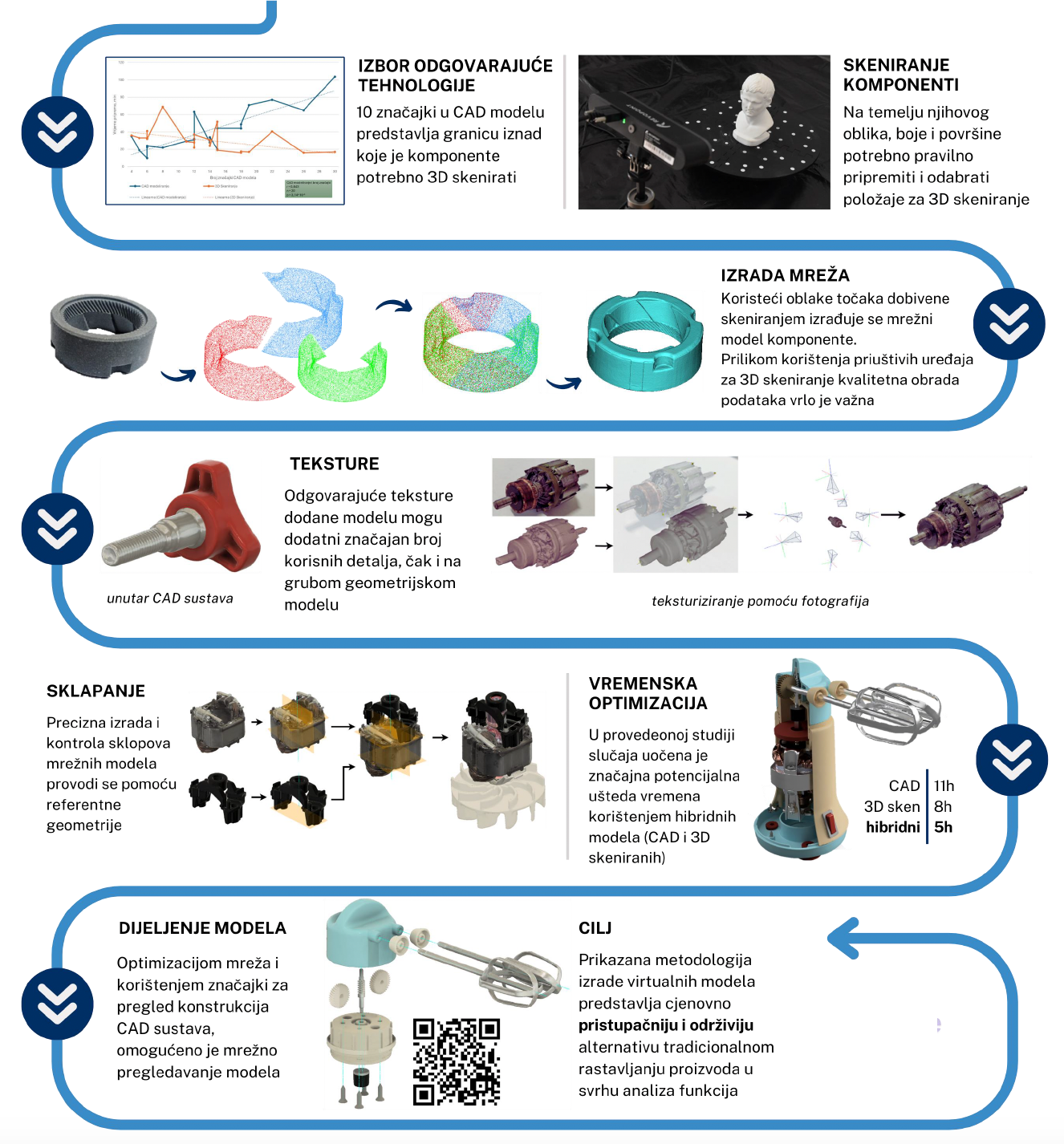The presented work describes the development and validation of a methodology for the preparation of computer models for virtual product disassembly in an educational environment. Traditionally, in the engineering education, disassembly of physical products is used as a method for analysing and understanding products’ design, functions, structure, energy flows and materials used. But this traditional approach comes with a number of challenges, including high costs, logistical requirements, and limitations on the availability and condition of products, tools, and protective equipment. Hence, the need to switch to digital models is considered, that would enable a similar level of understanding, but with a significant reduction in costs and operational difficulties. Available reverse engineering technologies, with particular emphasis on affordable 3D scanning technologies, were explored to identify the most appropriate methods for producing high-quality computer representations of the geometry, structure and behaviour of product components. A case study was conducted, in which the possibility of applying different methods and technologies to create models suitable for virtual disassembly was demonstrated through the digitisation of leaf blower and mixer products. The case study also helped in the identification of best practice examples, i.e. in the formulation of the methodology for preparing component and assembly models of different geometries, textures and functions. The focus is set on optimising the scanning and modelling processes, selecting appropriate devices and software tools, and processing and preparing models for use in educational environments. The validation of the methodology was carried out through an experimental study with target users. During the experiment, users created a total of 40 models of product components. Creation time was measured for each model and they were assigned quality ratings for the reproduction of functionality, geometry and textures. By analysing the results, it was concluded that users can reproduce the steps of the methodology and create representations of satisfactory quality. This analysis also identified components whose representations are more difficult to create, and instructions were given on how to improve the quality of the associated models.

Ivan Perković
2024
Rector award
Fakultet strojarstva i brodogradnje Sveučilišta u Zagrebu